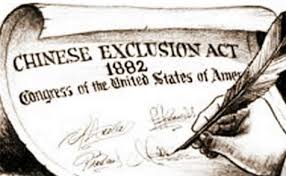
ICE cold
One of the many lies spewed out by Trump administration’s flacks is that there is no roundup of undocumented immigrants. Yet there is.
To see through the administration’s falsehoods, you don’t have to rely on the “fake news” reported in such fly-by-night publications as The New York Times and The Washington Post. Or even the local media in the states where the dragnet is taking place.
You only have to talk to the people who are most intimately knowledgeable and directly involved in these operations. Those people are the undocumented immigrants who have been detained and/or deported or are living in a state of terror at that prospect; and the agents of the Immigration and Customs Enforcement (ICE) service who are in ecstasy because, finally, they have a mandate to do almost anything they want.
What an apt acronym, ICE. You must have ice in your veins and in your heart to drag parents out of their homes while their children cringe in fear.
‘Unfettered” is the word that the ICE police come up with time and again to describe how they feel under the brave new world ushered in by Trump and his minions. Terrorized is what the immigrants that haven’t yet been rounded up feel.
Unfettered indeed. ICE and other arms of the immigration police like the Border Patrol are so unfettered and out of control that they detained and interrogated the son of boxing legend Muhammad Ali and his mother for almost two hours at Fort Lauderdale-Hollywood International Airport.
One of the things I find most remarkable about all this is the historical amnesia of pundits who say it’s unprecedented and invoke the Statue of Liberty to argue that the current anti-immigrant offensive runs against the grain of “what America is all about.”
Admittedly, these are potent and, to a certain extent, valid arguments that should be used as weapons against the Trump administration’s barbaric immigration policies. But they are at best half true. We shouldn’t fool ourselves into thinking that anything about this movie is new. Granted, in the post-1960s, post-civil rights movement, post-Obama era, few people thought there would be a sequel. But we were dead wrong.
The fact is that Americans have voiced their prejudices and the United States government has imposed racist immigration policies whenever there has been a perceived threat to the dominance of White Anglo Saxon Protestants (WASP). Irish Catholics, fleeing the potato famine of the late 1840s, were among the first to feel the sting in the form of mob violence and widespread prejudice.
But it was not until 1871, with the Chinese Exclusion Act, that the government took up the issue, enacting progressively broader and more severe racist immigration laws. The process culminated in 1924 when Congress passed a law imposing immigration quotas intended to stop the great wave of immigration from Eastern and Southern Europe that had been underway for more than two decades, changing the ethnic profile of the nation. That could not be tolerated, and the 1924 law stopped it. As now, the arguments against Italians, Jews, Poles, and the other groups banned de facto were racist slanders.
It did not stop there. Not long after the United States instituted a blanket ban on immigration from two huge continents, Africa and Asia, or the “barred zone.”
These racist laws were in place until 1965—which certain convenient exceptions. During World War II, for instance, with millions of men and women serving overseas, the country desperately needed labor to pick the crops to feed people on the home front who had left the farm to build tanks, planes, bombs, guns and munitions. Millions of Mexicans were invited by the U.S. government enter legally to perform agricultural work critical to the war effort. It was called the “bracero” program.
Their reward? In 1954, immigration authorities launched Operation Wetback, which rounded up and indiscriminately deported Mexicans, including braceros who entered legally, undocumented immigrants, and even a significant number of U.S. citizens of Mexican descent.
 The abolition of the racist quota system in 1965 triggered a gradually accelerating process of immigration from Latin America, Asia, and Africa, with resulting demographic and cultural changes roughly comparable to those of the turn of the century.
The abolition of the racist quota system in 1965 triggered a gradually accelerating process of immigration from Latin America, Asia, and Africa, with resulting demographic and cultural changes roughly comparable to those of the turn of the century.
The post 1924 quota system slowed immigration to a trickle for more than four decades. Over this time, the U.S. population became more homogeneously native-born and immigrants “Americanized” whether they wanted to or not.
Americans who came of age during this long immigration hiatus never experienced the cultural and linguistic diversity their grandparents had. The changes that started becoming visible in some cities by the late 1970s thus came as a double shock. Weren’t immigrants just history like Native Americans and buffalos? No.
The backlash came quickly. By 1980, Dade County (now Miami-Dade County) voters passed an anti-bilingualism referendum with the overwhelming support of white Anglo voters. As the impact of the new immigration grew in depth and breadth, so did the backlash.
The Donald Trump campaign, which echoed all the themes that in 1924 resulted in forty years of a racist immigration regime, was the culmination of this escalating backlash. As had 1920s xenophobes, Trump spread wildly exaggerated fears of crime and terrorism that served as a plausible cover story concealing the main reason for the fierce anti-immigration crusade. The reason, then and now, is fear the White Anglo-Saxon predominance that existed since colonial times is under threat.
A comparison with Canada adds useful perspective. The welcoming attitude of Canadians toward refugees in contrast to the hostility exemplified by Trump supporters goes deeper than ideological differences between leaders. Canada proudly proclaims itself a multicultural and multilingual society. Many Americans, especially those who voted for Trump, despise the idea of bilingualism and reject multiculturalism.
The good news is that a majority of Americans, who cast almost three million more votes for Hillary Clinton than for Donald Trump, are not racists. The bad news is that that there is a large enough minority who handed Donald Trump victory in the Electoral College.

